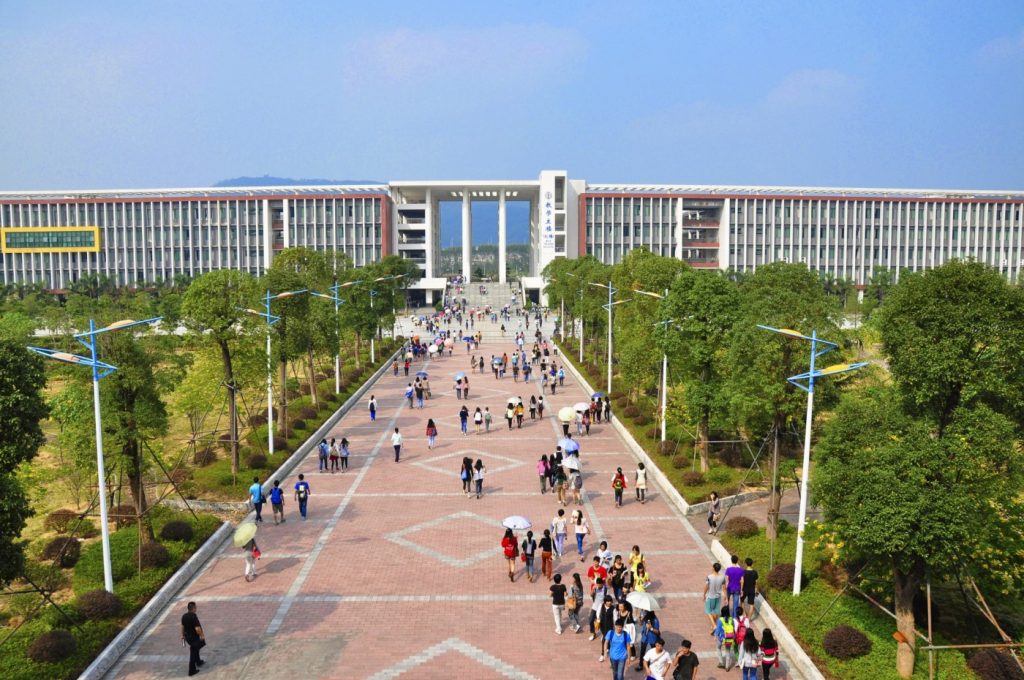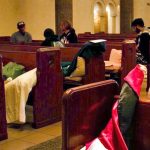Elaine S. Povich | Stateline.org (TNS)
Junior psychology major Erin Green works part time at the children’s preschool at Sonoma State University, caring for university employees’ kids ages 1 to 5. Some of the non-student workers in her center belong to a union. But she didn’t, until just a few weeks ago.
Green, a 49-year-old returning student who works 20 hours a week, said she makes $16.25 an hour, just above the state’s minimum wage of $16.
“I was appalled at how little we were getting paid,” Green said. “When I started to hear the buzz around the campus that we were about to become unionized, I thought that was something I should get involved in.”
Green and more than 7,000 undergraduate student workers across California State University’s 23 campuses overwhelmingly voted in an election this year to join a union. Now, about 20,000 undergrads are members of the California State University Employees Union, the largest union of undergraduate student workers in the country.
Green is at the tip of the growing movement toward undergraduate unionization on state college campuses. University of Oregon undergraduates voted in October to form a union covering about 4,000 students, one of the nation’s first such unions at a public university.
While graduate students and teaching assistants have been organizing since before the pandemic, large-scale undergraduate unions at public schools are new, joining recent moves by their counterparts at a number of private schools. Students, who often work next to unionized full-time employees, are looking for better pay, more predictable hours and benefits such as holiday and sick pay.
The student movements come as labor unions are seeing a resurgence nationwide. Since 2021, workers at hundreds of Starbucks stores have voted to organize, and Volkswagen workers at a Tennessee plant voted in April to join the United Auto Workers.
At Cal State, the union — which represents lab assistants, residence hall workers, cafeteria workers and others — will begin bargaining with the university system soon. Green is one of the student workers on the bargaining committee. The students joined CSUEU/SEIU Local 2579, which already represented 16,000 university staff members.
Students identify with the blue-collar workers, said Patricia Campos-Medina, executive director of the Worker Institute at Cornell University’s School of Industrial and Labor Relations.
“There used to be a separation — unions were for blue-collar workers, that if you were a professional, you didn’t need a union,” said Campos-Medina, who is on leave from her position while she is running as a Democrat for the U.S. Senate in New Jersey. “What they are realizing is that we all need a union.”
While the universities say they are ready to negotiate, ironing out agreements with a group of mostly part-time workers doing a variety of jobs — from manual labor in the agricultural school to checking out books in a library — could be challenging.
Steven Bloom, assistant vice president for government relations at the American Council on Education, a trade group for higher education, said part of the problem with union agreements is that student workers are students first, which complicates their relationship with the schools.
“We are not opposed to the unionization of students in general,” he said, though he acknowledged unions could affect university budgets. But he said personnel issues are even trickier than budgetary ones.
For example, he said, there’s a question of how to handle a situation if a dormitory resident adviser were to violate the school’s code of conduct or help out a student in their hall accused of doing so. In that case, what role would a union representative have, if any?
“It ultimately will create challenges for institutions in their relationship with their students. That relationship is built on an educational model, not an employment model,” he said.
Neither of the union proposals at Oregon or Cal State went into personnel matters outside of wages, hours, holidays, sick pay and parking.
‘In the earliest stages’
The growth in undergraduate unions is driven by economic conditions, inflation and, especially, rising tuition and other college costs, said William Herbert, executive director of the National Center for the Study of Collective Bargaining in Higher Education and the Professions, which is at Hunter College in New York City. But, he added, the growth was sparked by pandemic conditions.
During the pandemic, he noted, some student workers needed to be on campus for their jobs even when classes moved online and many of their peers left campus. They found themselves working in the same circumstances as unionized non-student employees, but without the same rights, he said.
“The impact of the pandemic was [students] rethinking the nature of their job and the roles they are playing,” he said. “Student workers, after the pandemic, are relating to that.”
Related Articles
FDA said it never inspected dental lab that made controversial AGGA device
Their first baby came with medical debt. These parents won’t have another
Three arrested in San Mateo roofing scheme
How elaborate deepfake scam duped finance worker into paying out $25 million
Bay Area and California add jobs in April — but the gains are puny
Kaily Brooks, 18, a rising sophomore at San Diego State University, works as a front desk assistant in Zura Hall, a campus dorm, and is now part of the California State University Employees Union. She said she makes minimum wage, with a $2-per-hour increase if she works an overnight shift. She hopes to get sick pay and better-than-minimum wage pay out of the union contract, because quitting her job isn’t an option.
“If I don’t work, I won’t be able to come back to school,” Brooks said.
At Cal State, sick pay is one of the demands undergraduate students are presenting to the administration as part of their upcoming negotiations. Others include higher wages, the introduction of holiday pay and an end to unpaid labor should they have to finish a job that continues past the end of a shift.
Students might have to work late if they have jobs feeding animals, for example, or must oversee a lab experiment that can’t be paused. They’re often limited in their weekly hours under university contracts.
Catherine Hutchinson, president of the California State University Employees Union, said students today are “understanding and seeing their worth. They know it’s not OK and not right the way the management has been treating them.”
Hutchinson once worked as an undergraduate student assistant in a biology lab at Cal State San Bernardino. Later in her career, she hired students to work for her in a lab and always felt bad when kids were sick and couldn’t work or get paid.
“We will keep pressing the university to carry out its mission to help working-class students succeed in life,” she said. “They need to treat student workers as a real staff person, and not less than a staff person.”
California State University spokesperson Hazel Kelly said there was no one available for a phone interview, but wrote in an email that the CSU Board of Trustees is set to receive the union’s proposals at its May meeting and will set a date for bargaining after that. “Through negotiations, the parties are expected to come to an agreement over terms and conditions of employment within the scope of collective bargaining,” she wrote.
She said the university, under the 1979 California Higher Education Employer-Employee Relations Act, is required to “bargain in good faith” over all the topics addressed by the student workers union.
In Oregon, university officials said they are ready to begin negotiations with the University of Oregon Student Workers union over a collective bargaining agreement.
Eric Howald, spokesperson and assistant director of issues management at the University of Oregon, said since the university is “in the earliest stages of the new arrangement,” he would have no further comment on how the process is unfolding.
The school said in February that student employees now have the right to have a union steward present during preliminary disciplinary proceedings, to hang posters on workplace bulletin boards, and to have a union representative give a presentation at orientations for new student employees.
Colorado collision
In some states, efforts to organize university students have met pushback.
A 2022 bill in the Colorado legislature that would have extended bargaining rights to student workers and a host of other government employees was whittled down drastically during negotiations. The bill that Democratic Gov. Jared Polis signed into law only extended the rights to county employees in the most populous counties.
Former state Rep. Daneya Esgar, a Democrat and chief sponsor of the measure, said it took two years to build a coalition in support of the original bill, which would have covered government employees from cities, counties and universities — including student workers. But, she said, the universities worried about the potential cost and lobbied hard to be exempted.
Polis told local media the original, broad-based bill was too expensive.
“Any time you run a bill that is going to claim to cost millions of dollars — and this is what the universities were reporting to folks — people begin to be nervous about passing the bill,” said Esgar, who is now a Pueblo County commissioner after having been term-limited out in the state legislature.
“The politics behind it were predictable,” said Ahmed White, a law professor at the University of Colorado Boulder. “There were elements of the state and university system that were not compelled to welcome union organizing. That was the position of the flagship where I work.”
White said the attitude among campus administrators was that the unionization effort was not necessary.
The University of Colorado did not officially take a position on the bill, and the president of the university did not publicly comment on it, spokesperson Jeff Howard wrote in an email to Stateline.
White said undergraduate students see successful labor contracts with graduate students and teaching assistants at both public and private universities, and are more inclined to want the same for themselves, he said.
Unions are optimistic about the organizing on campuses, he added. “There’s a sense of hope that they can make some progress. Young people are excited.”
Stateline is part of States Newsroom, a national nonprofit news organization focused on state policy.
©2024 States Newsroom. Visit at stateline.org. Distributed by Tribune Content Agency, LLC.


